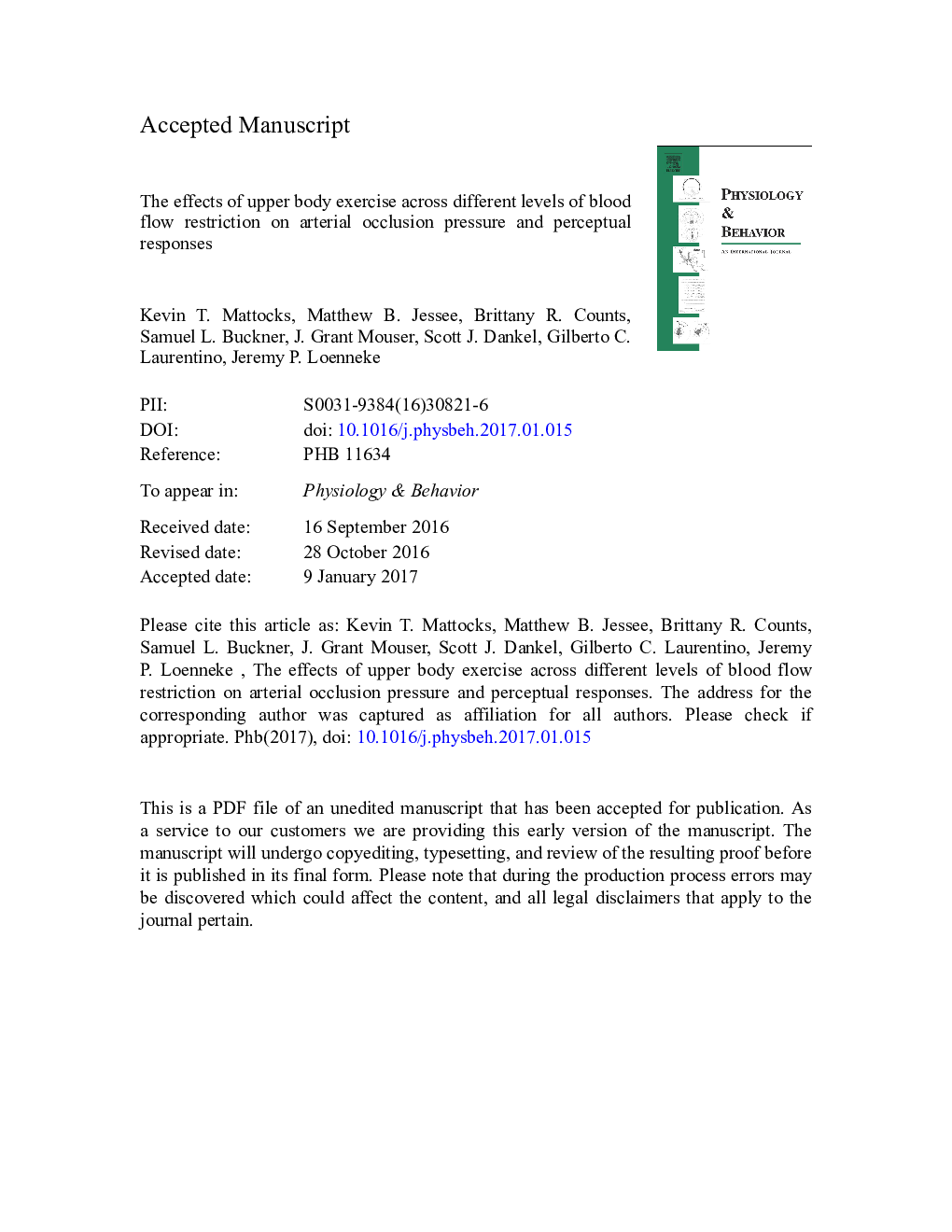| Article ID | Journal | Published Year | Pages | File Type |
|---|---|---|---|---|
| 5593838 | Physiology & Behavior | 2017 | 24 Pages |
Abstract
Recent studies have investigated relative pressures that are applied during blood flow restriction exercise ranging from 40%-90% of resting arterial occlusion pressure; however, no studies have investigated relative pressures below 40% arterial occlusion pressure. The purpose of this study was to characterize the cardiovascular and perceptual responses to different levels of pressures. Twenty-six resistance trained participants performed four sets of unilateral elbow flexion exercise using 30% of their 1RM in combination with blood flow restriction inflated to one of six relative applied pressures (0%, 10%, 20%, 30%, 50%, 90% arterial occlusion pressure). Arterial occlusion pressure was measured before (pre) and immediately after the last set of exercise at the radial artery. RPE and discomfort were taken prior to (pre) and following each set of exercise. Data presented as mean (95% CI) except for perceptual responses represented as the median (25th, 75th percentile). Arterial occlusion pressure increased from pre to post (p < 0.001) in all conditions but was augmented further with higher pressures [e.g. 0%: 36 (30-42) mm Hg vs. 10%: 39 (34-44) mm Hg vs. 90% 46 (41-52) mm Hg]. For RPE and discomfort, there were significant differences across conditions for all sets of exercise (p < 0.01) with the ratings of RPE [e.g. 0%: 14.5 (13, 17) vs. 10%: 13.5 (12, 17) vs. 90%: 17 (14.75, 19) during last set] and discomfort [e.g. 0%: 3.5 (1.5, 6.25) vs. 10%: 3 (1, 6) vs. 90%: 7 (4.5, 9) during last set] generally being greater at the higher restriction pressures. All of these differences at the higher restriction pressures occurred despite completing a lower total volume of exercise. Applying higher relative pressures results in the greatest cardiovascular response, higher perceptual ratings, and greater decrease in exercise volume compared to lower restriction pressures. Therefore, the perceptual responses from lower relative pressures may be more appealing and provide a safer and more tolerable stimulus for individuals.
Related Topics
Life Sciences
Biochemistry, Genetics and Molecular Biology
Physiology
Authors
Kevin T. Mattocks, Matthew B. Jessee, Brittany R. Counts, Samuel L. Buckner, J. Grant Mouser, Scott J. Dankel, Gilberto C. Laurentino, Jeremy P. Loenneke,
